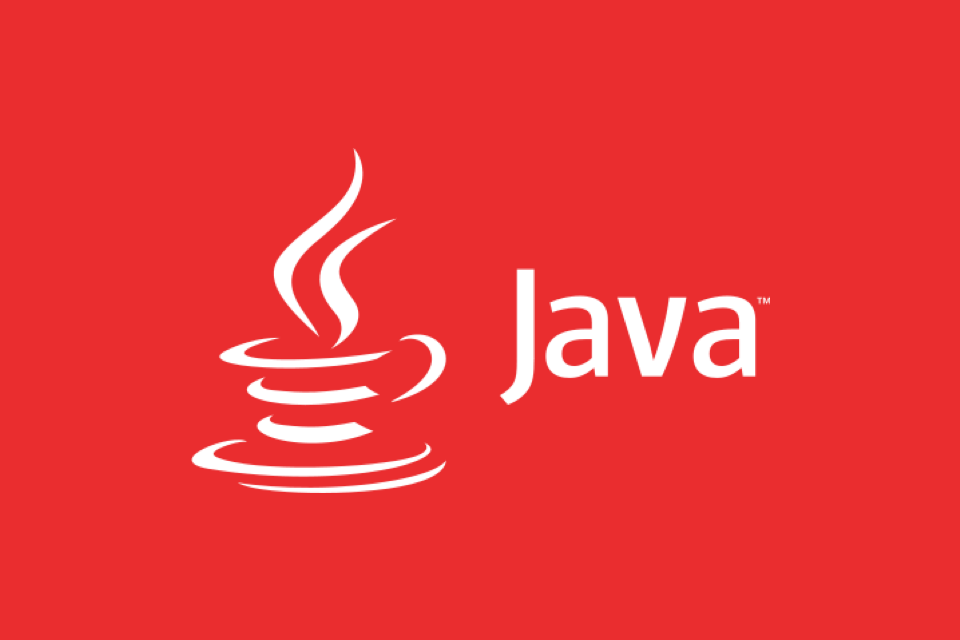現代爪哇的異步編程技術
Java 支持異步編程的方式包括使用CompletableFuture、響應式流(如Project Reactor)以及Java 19 中的虛擬線程。 1. CompletableFuture通過鍊式調用提升代碼可讀性和維護性,支持任務編排和異常處理;2. Project Reactor提供Mono和Flux類型實現響應式編程,具備背壓機制和豐富的操作符;3. 虛擬線程減少並發成本,適用於I/O密集型任務,與傳統平台線程相比更輕量且易於擴展。每種方式均有適用場景,應根據需求選擇合適工具並避免混合模型以保持簡潔性。

Java has come a long way in supporting asynchronous programming, especially with the evolution of features like CompletableFuture , reactive streams, and more recently, virtual threads in Java 19 . If you're working on applications that require high concurrency—like web services or real-time data processing—understanding how to manage async tasks efficiently is key.

Using CompletableFuture for Cleaner Async Code
Before CompletableFuture (introduced in Java 8), managing asynchronous operations often meant dealing with nested callbacks or manually handling thread coordination. Now, it's much smoother.

With CompletableFuture , you can chain async operations using methods like .thenApply() , .thenAccept() , and .exceptionally() . This makes your code not only more readable but also easier to debug and maintain.
For example:

CompletableFuture<String> future = CompletableFuture.supplyAsync(() -> {
// Simulate a long-running task
return "Result";
});
future.thenApply(result -> result " processed")
.thenAccept(System.out::println);A few things to keep in mind:
- Avoid blocking calls unless necessary; use
.thenApply()or.thenCompose()to continue the flow. - Handle exceptions gracefully using
.exceptionally()or.handle()so your async pipeline doesn't silently fail. - Use custom executors if you want more control over thread pools instead of relying on the common fork-join pool.
Leveraging Reactive Streams with Project Reactor
If you're building systems that deal with streams of data—like event-driven architectures or streaming APIs—reactive programming becomes a natural fit. Libraries like Project Reactor offer Mono and Flux types that represent asynchronous sequences of 0..1 ( Mono ) or 0..N ( Flux ) items.
Here's a simple example of fetching user data asynchronously:
Mono<User> userMono = userService.getUserById(123);
userMono.subscribe(user -> System.out.println("Got user: " user.getName())); Reactive streams give you backpressure support out of the box, which helps prevent overwhelming your system when producers are faster than consumers. Also, operators like map , flatMap , filter , and zip make composing complex async logic surprisingly clean.
Some tips:
- Don't mix blocking and non-blocking styles without understanding the consequences.
- Be cautious about where transformations happen by specifying schedulers using
.subscribeOn()and.publishOn(). - Use
Schedulers.boundedElastic()for blocking I/O-bound tasks inside a reactive pipeline.
Exploring Virtual Threads (Java 19 )
One of the biggest recent additions to Java's async capabilities is virtual threads , introduced as part of Project Loom starting from Java 19.
Unlike platform threads (the traditional OS-backed threads), virtual threads are lightweight and managed by the JVM. This means you can spawn millions of them without the usual overhead.
To try it out:
ExecutorService executor = Executors.newVirtualThreadPerTaskExecutor();
executor.submit(() -> {
// Your long-running or blocking task here
return null;
});This is particularly useful for I/O-heavy workloads like HTTP clients, database calls, or message brokers, where threads often sit idle waiting for responses.
Key points:
- Virtual threads aren't magic—they still need resources, just fewer than platform threads.
- They work best when used with blocking-style code that would otherwise tie up regular threads.
- Existing async libraries will likely evolve to take advantage of this under the hood soon.
Asynchronous programming in modern Java offers several solid paths depending on your use case. Whether you're sticking with CompletableFuture , going full reactive, or experimenting with virtual threads, each approach brings its own strengths to the table. The trick is knowing when to reach for which tool—and avoiding mixing models unnecessarily unless you really need the flexibility.
That's basically it.
以上是現代爪哇的異步編程技術的詳細內容。更多資訊請關注PHP中文網其他相關文章!

熱AI工具

Undress AI Tool
免費脫衣圖片

Undresser.AI Undress
人工智慧驅動的應用程序,用於創建逼真的裸體照片

AI Clothes Remover
用於從照片中去除衣服的線上人工智慧工具。

Clothoff.io
AI脫衣器

Video Face Swap
使用我們完全免費的人工智慧換臉工具,輕鬆在任何影片中換臉!

熱門文章

熱工具

記事本++7.3.1
好用且免費的程式碼編輯器

SublimeText3漢化版
中文版,非常好用

禪工作室 13.0.1
強大的PHP整合開發環境

Dreamweaver CS6
視覺化網頁開發工具

SublimeText3 Mac版
神級程式碼編輯軟體(SublimeText3)
 撰寫PHP評論的提示
Jul 18, 2025 am 04:51 AM
撰寫PHP評論的提示
Jul 18, 2025 am 04:51 AM
寫好PHP註釋的關鍵在於明確目的與規範,註釋應解釋“為什麼”而非“做了什麼”,避免冗餘或過於簡單。 1.使用統一格式,如docblock(/*/)用於類、方法說明,提升可讀性與工具兼容性;2.強調邏輯背後的原因,如說明為何需手動輸出JS跳轉;3.在復雜代碼前添加總覽性說明,分步驟描述流程,幫助理解整體思路;4.合理使用TODO和FIXME標記待辦事項與問題,便於後續追踪與協作。好的註釋能降低溝通成本,提升代碼維護效率。
 通過評論提高可讀性
Jul 18, 2025 am 04:46 AM
通過評論提高可讀性
Jul 18, 2025 am 04:46 AM
寫好註釋的關鍵在於說明“為什麼”而非僅“做了什麼”,提升代碼可讀性。 1.註釋應解釋邏輯原因,例如值選擇或處理方式背後的考量;2.對複雜邏輯使用段落式註釋,概括函數或算法的整體思路;3.定期維護註釋確保與代碼一致,避免誤導,必要時刪除過時內容;4.在審查代碼時同步檢查註釋,並通過文檔記錄公共邏輯以減少代碼註釋負擔。
 編寫有效的PHP評論
Jul 18, 2025 am 04:44 AM
編寫有效的PHP評論
Jul 18, 2025 am 04:44 AM
註釋不能馬虎是因為它要解釋代碼存在的原因而非功能,例如兼容老接口或第三方限制,否則看代碼的人只能靠猜。必須加註釋的地方包括複雜的條件判斷、特殊的錯誤處理邏輯、臨時繞過的限制。寫註釋更實用的方法是根據場景選擇單行註釋或塊註釋,函數、類、文件開頭用文檔塊註釋說明參數與返回值,並保持註釋更新,對複雜邏輯可在前面加一行概括整體意圖,同時不要用註釋封存代碼而應使用版本控制工具。
 有效的PHP評論
Jul 18, 2025 am 04:33 AM
有效的PHP評論
Jul 18, 2025 am 04:33 AM
寫好PHP註釋的關鍵在於清晰、有用且簡潔。 1.註釋應說明代碼背後的意圖而非僅描述代碼本身,如解釋複雜條件判斷的邏輯目的;2.在魔術值、舊代碼兼容、API接口等關鍵場景添加註釋以提升可讀性;3.避免重複代碼內容,保持簡潔具體,並使用標準格式如PHPDoc;4.註釋需與代碼同步更新,確保准確性。好的註釋應站在他人角度思考,降低理解成本,成為代碼的理解導航儀。
 PHP開發環境設置
Jul 18, 2025 am 04:55 AM
PHP開發環境設置
Jul 18, 2025 am 04:55 AM
第一步選擇集成環境包XAMPP或MAMP搭建本地服務器;第二步根據項目需求選擇合適的PHP版本並配置多版本切換;第三步選用VSCode或PhpStorm作為編輯器並搭配Xdebug進行調試;此外還需安裝Composer、PHP_CodeSniffer、PHPUnit等工具輔助開發。
 PHP評論語法
Jul 18, 2025 am 04:56 AM
PHP評論語法
Jul 18, 2025 am 04:56 AM
PHP註釋有三種常用方式:單行註釋適合簡要說明代碼邏輯,如//或#用於當前行解釋;多行註釋/*...*/適合詳細描述函數或類的作用;文檔註釋DocBlock以/**開頭,為IDE提供提示信息。使用時應避免廢話、保持同步更新,並勿長期用註釋屏蔽代碼。
 PHP比較操作員
Jul 18, 2025 am 04:57 AM
PHP比較操作員
Jul 18, 2025 am 04:57 AM
PHP比較運算符需注意類型轉換問題。 1.使用==僅比較值,會進行類型轉換,如1=="1"為true;2.使用===需值與類型均相同,如1==="1"為false;3.大小比較可作用於數值和字符串,如"apple"
 團隊的PHP評論
Jul 18, 2025 am 04:28 AM
團隊的PHP評論
Jul 18, 2025 am 04:28 AM
寫好PHP註釋的關鍵在於解釋“為什麼”而非“做什麼”,統一團隊註釋風格,避免重複代碼式註釋,合理使用TODO和FIXME標記。 1.註釋應重點說明代碼背後的邏輯原因,如性能優化、算法選擇等;2.團隊需統一註釋規範,如單行註釋用//,函數類用docblock格式,並包含@author、@since等標籤;3.避免僅複述代碼內容的無意義註釋,應補充業務含義;4.使用TODO和FIXME標記待辦事項,並可配合工具追踪,確保註釋與代碼同步更新,提升項目可維護性。







